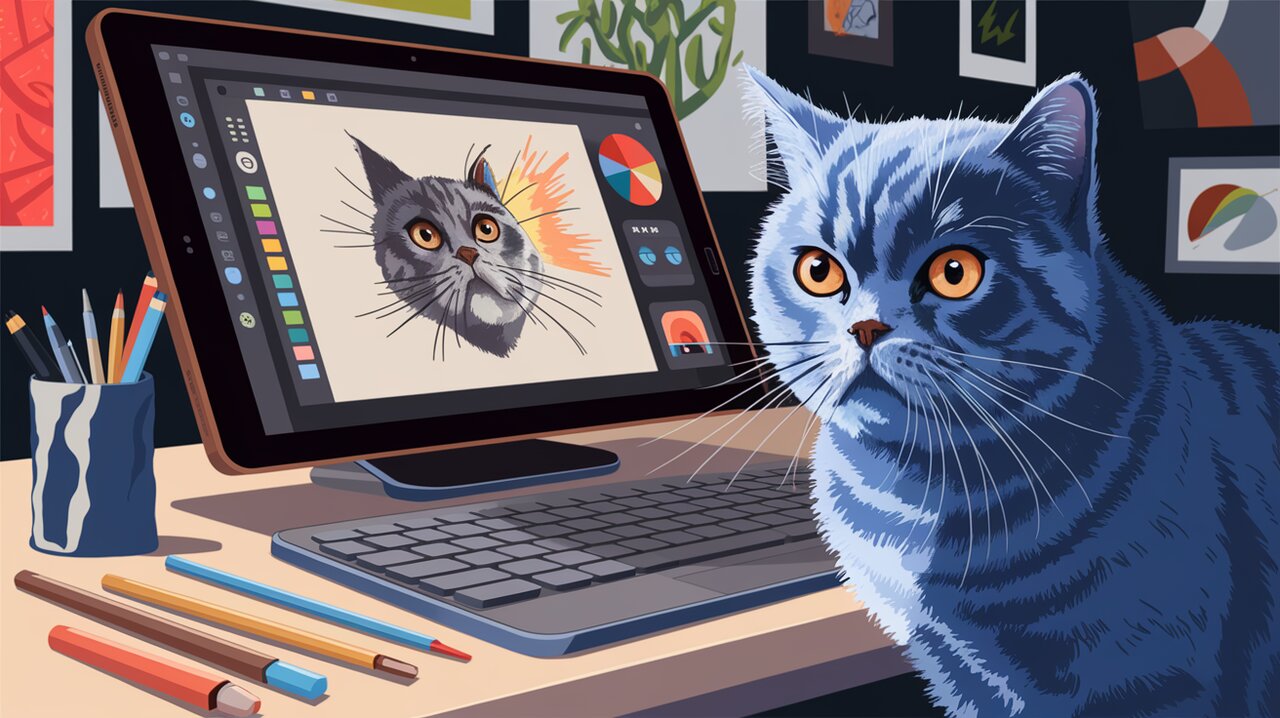
Sketch Your Way to React Glory with react-sketch-canvas
Unleash Your Creativity with react-sketch-canvas
React Sketch Canvas is a powerful and flexible library that brings freehand vector drawing capabilities to your React applications. By leveraging SVG as a canvas, this component offers a smooth and responsive drawing experience across desktop and mobile devices. Whether you’re building a digital whiteboard, a signature pad, or an interactive drawing tool, react-sketch-canvas provides the foundation you need to bring your ideas to life.
Key Features
React Sketch Canvas comes packed with an array of features that make it a versatile choice for developers:
- Freehand vector drawing using SVG
- Support for mouse, touch, and graphic tablet input
- Customizable stroke width and color
- Eraser mode for precise corrections
- Undo and redo functionality
- Export options for PNG, JPEG, and SVG formats
- Path export and import for saving and restoring drawings
- Customizable canvas size and background
Getting Started
Installation
To add React Sketch Canvas to your project, use one of the following package managers:
npm install react-sketch-canvas
or
yarn add react-sketch-canvas
Basic Usage
Let’s dive into a simple example to get you started with React Sketch Canvas:
import React from "react";
import { ReactSketchCanvas } from "react-sketch-canvas";
const styles = {
border: "0.0625rem solid #9c9c9c",
borderRadius: "0.25rem",
};
const SimpleCanvas: React.FC = () => {
return (
<ReactSketchCanvas
style={styles}
width="600"
height="400"
strokeWidth={4}
strokeColor="red"
/>
);
};
export default SimpleCanvas;
This code snippet creates a basic canvas with a red stroke color and a width of 4 pixels. The canvas is styled with a light border and rounded corners for a polished look.
Advanced Techniques
Exporting Your Masterpiece
One of the most powerful features of React Sketch Canvas is the ability to export your drawings. Here’s how you can implement an export function:
import React, { useRef } from "react";
import { ReactSketchCanvas } from "react-sketch-canvas";
const ExportableCanvas: React.FC = () => {
const canvasRef = useRef<ReactSketchCanvas>(null);
const exportImage = () => {
if (canvasRef.current) {
canvasRef.current
.exportImage("png")
.then((data) => {
console.log(data);
// Here you can handle the exported image data
})
.catch((e) => {
console.log(e);
});
}
};
return (
<div>
<ReactSketchCanvas
ref={canvasRef}
strokeWidth={5}
strokeColor="black"
/>
<button onClick={exportImage}>Export as PNG</button>
</div>
);
};
export default ExportableCanvas;
This example demonstrates how to use a ref to access the canvas methods and export the drawing as a PNG image.
Customizing the Canvas
React Sketch Canvas offers a wide range of props to customize your drawing experience. Here’s a more advanced setup:
import React from "react";
import { ReactSketchCanvas } from "react-sketch-canvas";
const CustomCanvas: React.FC = () => {
return (
<ReactSketchCanvas
width="100%"
height="500px"
strokeWidth={4}
strokeColor="#3B3B3B"
canvasColor="#FFFAF0"
eraserWidth={20}
backgroundImage="https://example.com/background.jpg"
exportWithBackgroundImage={true}
allowOnlyPointerType="all"
style={{ border: "0.0625rem solid #9c9c9c" }}
/>
);
};
export default CustomCanvas;
This setup creates a canvas that fills the width of its container, has a custom background color and image, and allows all pointer types for input.
Handling User Interactions
React Sketch Canvas provides several methods to handle user interactions. Let’s explore how to implement undo, redo, and clear functionalities:
import React, { useRef } from "react";
import { ReactSketchCanvas } from "react-sketch-canvas";
const InteractiveCanvas: React.FC = () => {
const canvasRef = useRef<ReactSketchCanvas>(null);
const handleUndo = () => {
canvasRef.current?.undo();
};
const handleRedo = () => {
canvasRef.current?.redo();
};
const handleClear = () => {
canvasRef.current?.clearCanvas();
};
return (
<div>
<ReactSketchCanvas
ref={canvasRef}
strokeWidth={4}
strokeColor="blue"
/>
<button onClick={handleUndo}>Undo</button>
<button onClick={handleRedo}>Redo</button>
<button onClick={handleClear}>Clear</button>
</div>
);
};
export default InteractiveCanvas;
This example showcases how to implement undo, redo, and clear functionalities, giving users more control over their drawing experience.
Eraser Mode
React Sketch Canvas also supports an eraser mode, allowing users to make precise corrections:
import React, { useState, useRef } from "react";
import { ReactSketchCanvas } from "react-sketch-canvas";
const EraserCanvas: React.FC = () => {
const [eraseMode, setEraseMode] = useState(false);
const canvasRef = useRef<ReactSketchCanvas>(null);
const toggleEraseMode = () => {
setEraseMode(!eraseMode);
canvasRef.current?.eraseMode(eraseMode);
};
return (
<div>
<ReactSketchCanvas
ref={canvasRef}
strokeWidth={4}
strokeColor="green"
eraserWidth={20}
/>
<button onClick={toggleEraseMode}>
{eraseMode ? "Draw Mode" : "Erase Mode"}
</button>
</div>
);
};
export default EraserCanvas;
This implementation allows users to switch between draw and erase modes, enhancing the editing capabilities of your canvas.
Conclusion
React Sketch Canvas opens up a world of possibilities for creating interactive drawing experiences in your React applications. From simple sketches to complex illustrations, this library provides the tools you need to bring your ideas to life on the web. By leveraging its extensive feature set and customization options, you can create unique and engaging drawing interfaces that will delight your users.
As you continue to explore React Sketch Canvas, remember to experiment with different configurations and integrate it creatively into your projects. Whether you’re building an educational tool, a design application, or simply adding a fun interactive element to your website, React Sketch Canvas is your canvas for innovation in the React ecosystem.
